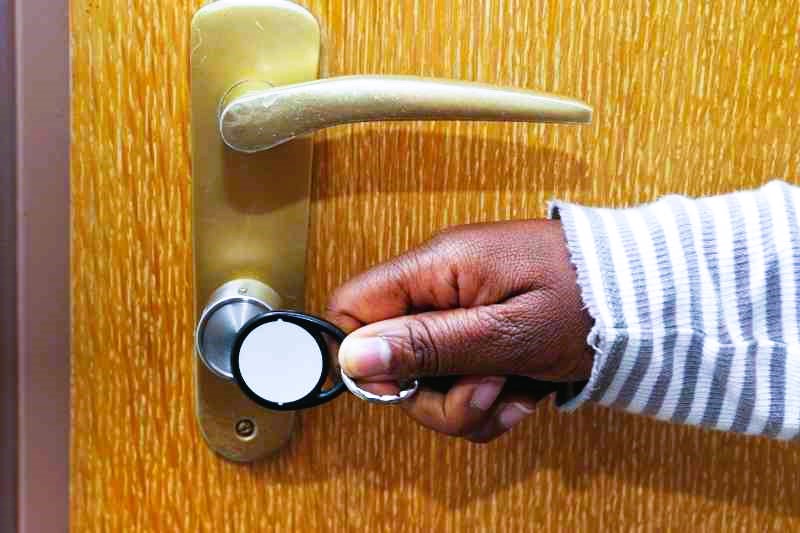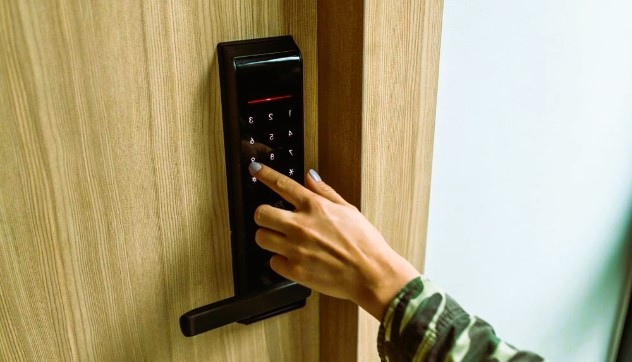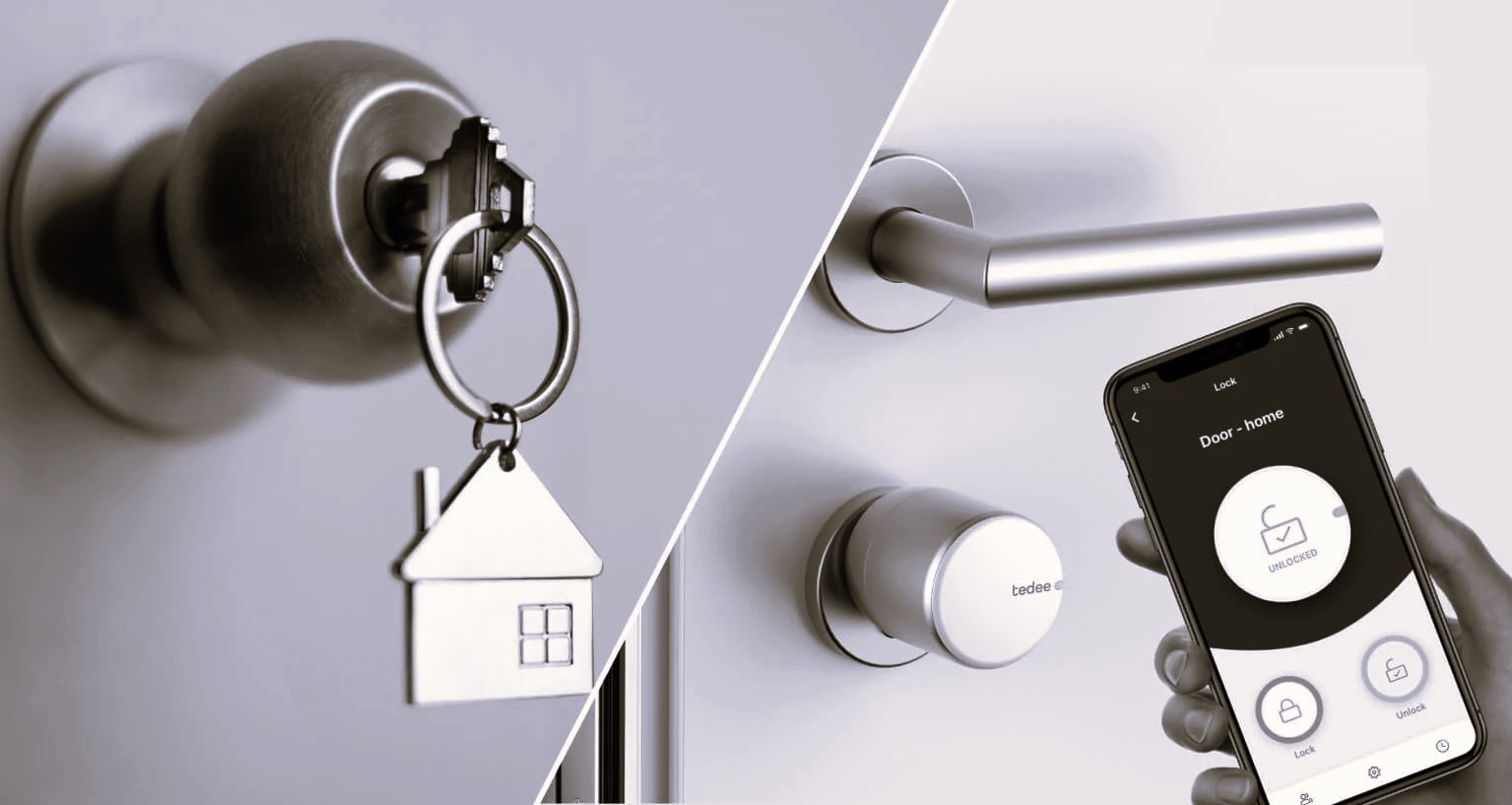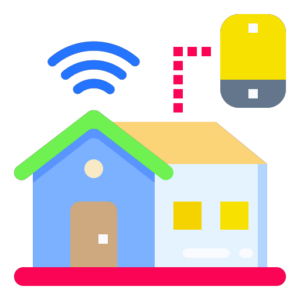The evolution of smart home technology has not only brought convenience but has also significantly enhanced home security. One prominent aspect of this transformation is the adoption of smart door locks and keyless entry systems. In this exploration, we’ll delve into the world of smart door locks, examining their features, benefits, and the standards that contribute to their reliability and effectiveness.
1. Smart Door Locks: Revolutionizing Home Security
Features:
- Remote Access: Smart door locks allow homeowners to remotely control and monitor their locks using a smartphone app. This feature is particularly useful for granting access to guests or service providers.
- Biometric Authentication: Some advanced smart locks incorporate biometric features such as fingerprint recognition or facial recognition, adding an extra layer of security.
- Keyless Entry: Eliminating the need for traditional keys, smart locks often provide keyless entry through methods like PIN codes, RFID cards, or smartphone proximity.
Benefits:
- Convenience: Keyless entry and remote access enhance convenience, allowing homeowners to manage access to their homes from anywhere.
- Enhanced Security: Biometric authentication and advanced encryption contribute to heightened security, reducing the risk of unauthorized entry.
- Activity Monitoring: Smart locks often come with activity logs, providing homeowners with a record of who entered or exited the property and when.
2. Connectivity Standards for Smart Door Locks:

Wi-Fi:
- Definition: Wi-Fi connectivity enables smart door locks to connect to the home network, allowing remote access and control through smartphone apps.
- Advantages: Wi-Fi connectivity provides a robust and widely adopted standard, ensuring compatibility with various smart home ecosystems. Create the ultimate multimedia experience with home theaters.
Bluetooth:
- Definition: Bluetooth connectivity allows for short-range communication between the smart lock and a paired device, such as a smartphone or tablet.
- Advantages: Bluetooth is energy-efficient and facilitates local control of the smart lock, especially useful for proximity-based unlocking.
Z-Wave and Zigbee:
- Definition: Z-Wave and Zigbee are wireless communication standards designed for low-power, short-range applications, providing interoperability among smart home devices.
- Advantages: These standards contribute to a mesh network, enhancing communication reliability and allowing smart locks to integrate seamlessly with other smart devices.
3. Keyless Entry Methods:
PIN Codes:
- Definition: Users can unlock the smart door lock by entering a pre-set Personal Identification Number (PIN) code on a keypad.
- Advantages: PIN codes offer a straightforward keyless entry method, and codes can be easily changed for security purposes.
RFID Cards:
- Definition: RFID cards, similar to access cards, can be used to unlock the door by presenting the card to the smart lock’s reader.
- Advantages: RFID cards are convenient and provide a physical keyless entry option for users who prefer not to use a smartphone.
Smartphone Proximity:
- Definition: Smart door locks with proximity sensors can automatically unlock when a recognized smartphone is in close proximity.
- Advantages: This hands-free approach to unlocking enhances user convenience, especially when approaching the door with hands full.
4. Biometric Authentication:
Fingerprint Recognition:
- Definition: Some smart locks feature fingerprint recognition technology, allowing authorized individuals to unlock the door with their registered fingerprints.
- Advantages: Biometric authentication adds a high level of security, as fingerprints are unique to each individual.
Facial Recognition:
- Definition: Advanced smart door locks may incorporate facial recognition technology, identifying authorized users based on facial features.
- Advantages: Facial recognition provides a seamless and contactless method of unlocking, enhancing both convenience and security.
5. Battery Life and Power Options:
Battery-Powered:
- Definition: Many smart door locks are battery-powered, relying on standard or rechargeable batteries for operation.
- Advantages: Battery-powered locks are easy to install and maintain, and some models provide long battery life.
Hardwired:
- Definition: Some smart locks can be hardwired to the home’s electrical system, ensuring a continuous power supply.
- Advantages: Hardwired locks eliminate the need for battery replacements but may require professional installation.
6. Integration with Smart Home Ecosystems:

Smart Home Hubs:
- Definition: Smart home hubs, such as Amazon Echo or Google Home, act as central control systems that enable users to integrate and control various smart devices, including smart door locks.
- Advantages: Integration with smart home hubs allows for centralized control and automation, creating a cohesive smart home ecosystem.
Voice Control:
- Definition: Smart door locks can be integrated with voice assistants like Amazon’s Alexa, Google Assistant, or Apple’s Siri, enabling users to control the lock using voice commands.
- Advantages: Voice control adds an additional layer of convenience and hands-free operation to smart door locks.
7. International Standards and Smart Door Locks:
The International Organization for Standardization (ISO) plays a crucial role in establishing standards related to smart door locks, ensuring they meet quality, security, and interoperability benchmarks at project zomboid server hosting.
For more information on international standards related to smart door locks, you can refer to the ISO website.
Conclusion: Embracing the Future of Home Security
Smart door locks and keyless entry systems represent a significant leap forward in home security and convenience. As technology continues to advance, the integration of biometrics, connectivity standards, and innovative entry methods enhances the overall user experience. By understanding the features, benefits, and standards associated with smart door locks, homeowners can make informed decisions to fortify their homes with modern security solutions. The future of home security is undeniably smart, and it begins with unlocking the potential of keyless entry.


